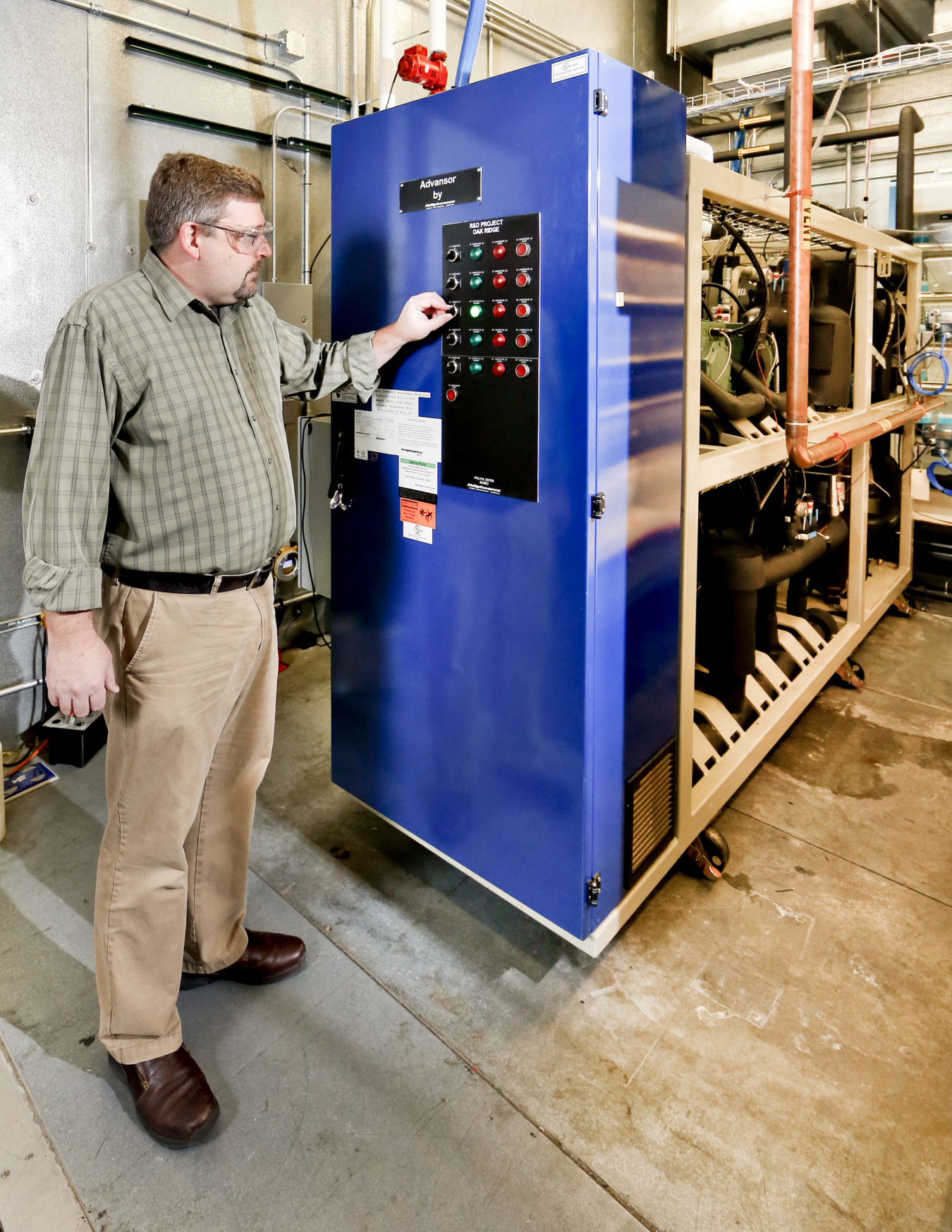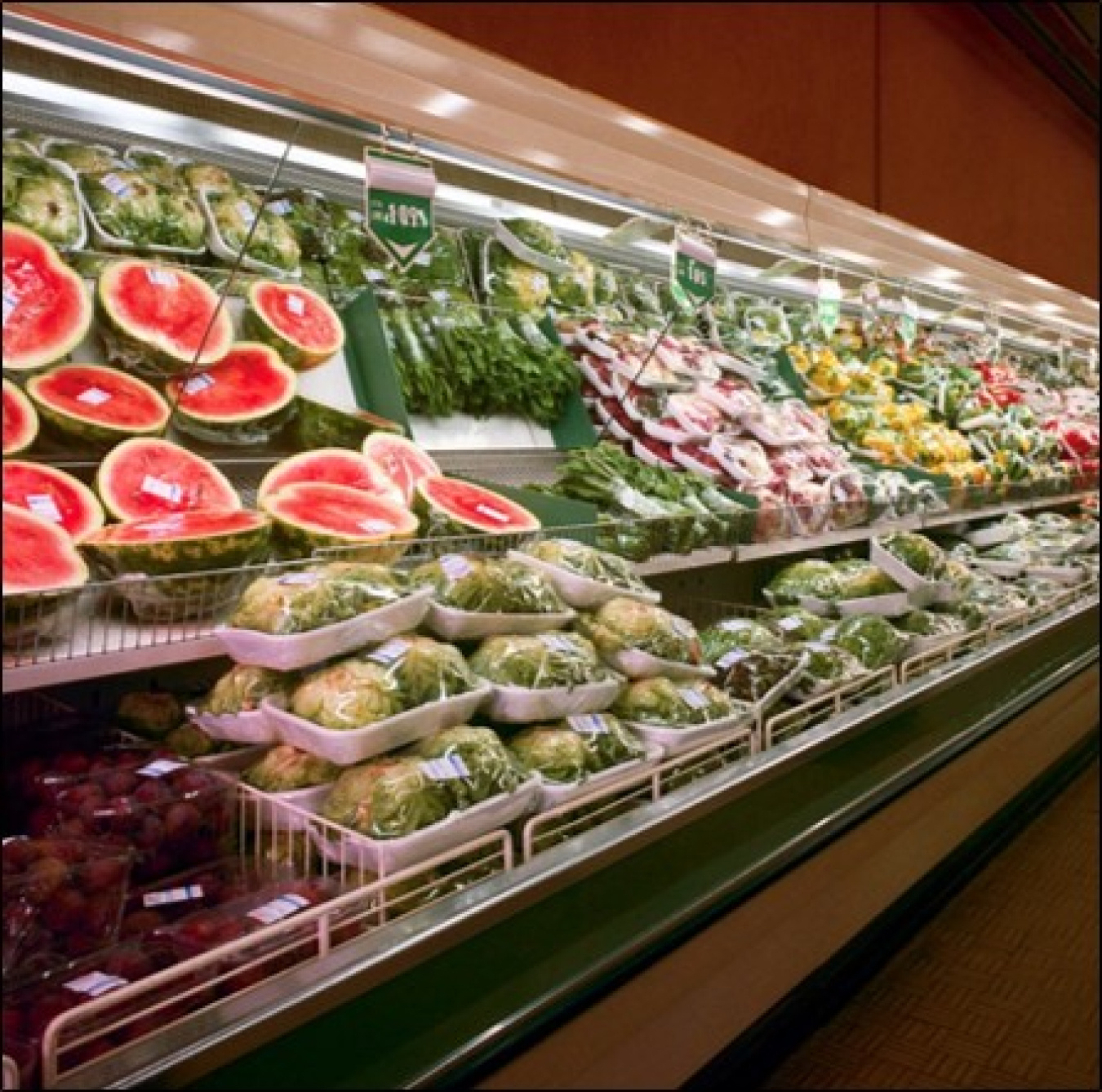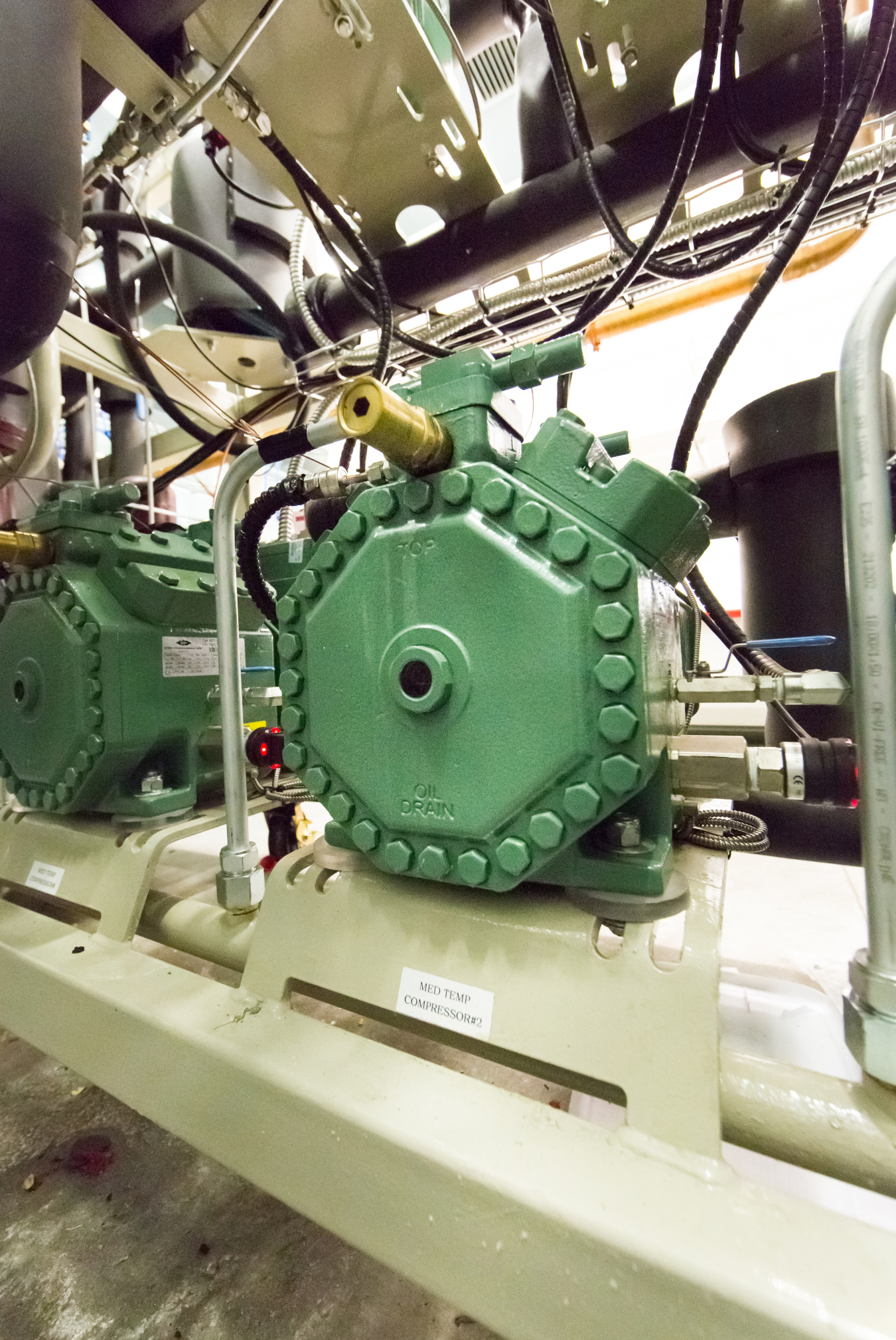EERE Success Story—New Advanced Refrigeration Technology Provides Energy, Low Utility Bills for Supermarkets
September 20, 2016
Oak Ridge National Laboratory's (ORNL's) Brian Fricke tests Hillphoenix's Advansor Refrigeration System in ORNL's state-of-the-art Building Technologies Research & Integration Center (BTRIC) user facility; Photo Credit: Oak Ridge National Lab

Hillphoenix’s advanced refrigeration technology has now been installed in over 75 stores nationwide, helping those businesses cut their utility bills and lower their greenhouse gas emissions. Photo Credit: Oak Ridge National Lab

Photo Credit: Oak Ridge National Lab
Traditional supermarket refrigeration systems found in most U.S. grocery stores require a substantial amount of energy to keep fruits and vegetables fresh year round. An average supermarket consumes nearly 2 million kilowatt hours per year, and refrigeration accounts for nearly half of that. They are also prone to significant refrigerant leakage—20 to 25% leakage a year of the two to four thousand pound refrigerant inventory—emitting environmentally harmful greenhouse gases into the atmosphere. The most common of these gases are hydrofluorocarbons (HFCs) such as R-404A, which are about 4,000 times more potent global warming contributors than carbon dioxide.
Hillphoenix, a leading refrigeration systems manufacturer, developed the Advansor CO2 refrigeration system, already in use in European food retail and industrial applications. Hillphoenix modified the system’s design for the North American market, and established a cooperative research and development agreement with Oak Ridge National Laboratory to evaluate the new system’s compliance with safety regulations and cost-effectiveness in southern climates. The resultant Second Nature® Advansor system reduces greenhouse gas emissions by 78% compared to existing systems, and lowers energy consumption by 25%. It also supports the White House’s initiative to phase down HFCs on an accelerated basis through an amendment to the Montreal Protocol, by providing an alternative to HFC-based systems for refrigeration applications.
The Second Nature Advansor system, which hit the market in January 2014, was named an R&D 100 Award Finalist in 2015. By using CO2 as the refrigerant in a transcritical booster system, it provides solutions to both challenges – high refrigerant leakage rates, and high-global warming potential refrigerants. This has made the Advansor system an attractive alternative for new supermarkets and as a replacement for older refrigeration systems, a win-win for both the climate and grocery stores’ bottom lines.
As of September 2016, Advansor has already been installed in more than 130 locations across the U.S. After nearly three years on the market, it is estimated that these installed systems have reduced the nation’s annual carbon footprint by more than 340 million pounds.
The Building Technologies Office leads a vast network of research and industry partners to continually develop innovative, cost-effective energy saving solutions—better products, better new homes, better ways to improve older homes, and better buildings in which we work, shop, and lead our everyday lives.
The Office of Energy Efficiency and Renewable Energy (EERE) success stories highlight the positive impact of its work with businesses, industry partners, universities, research labs, and other entities.

